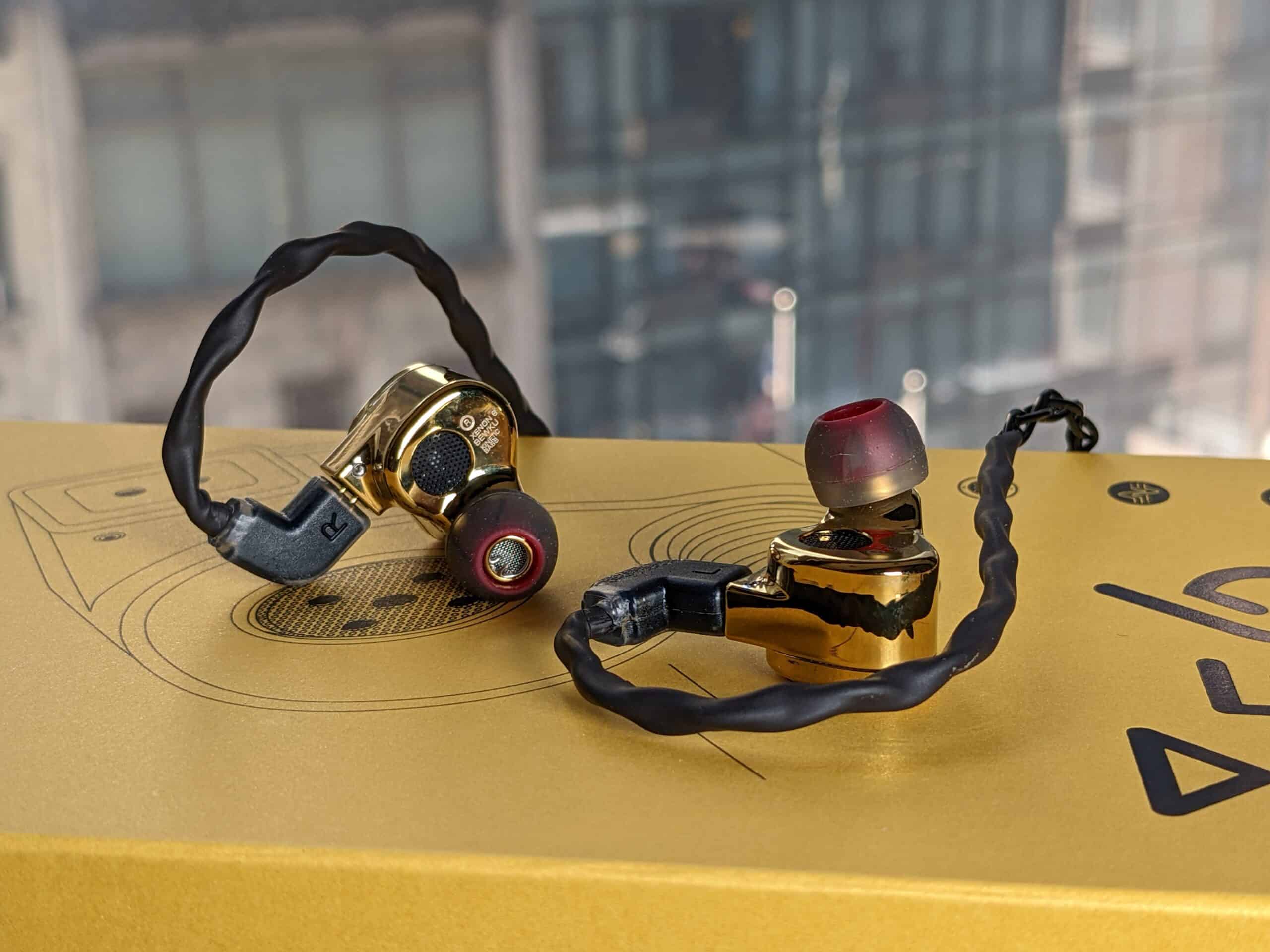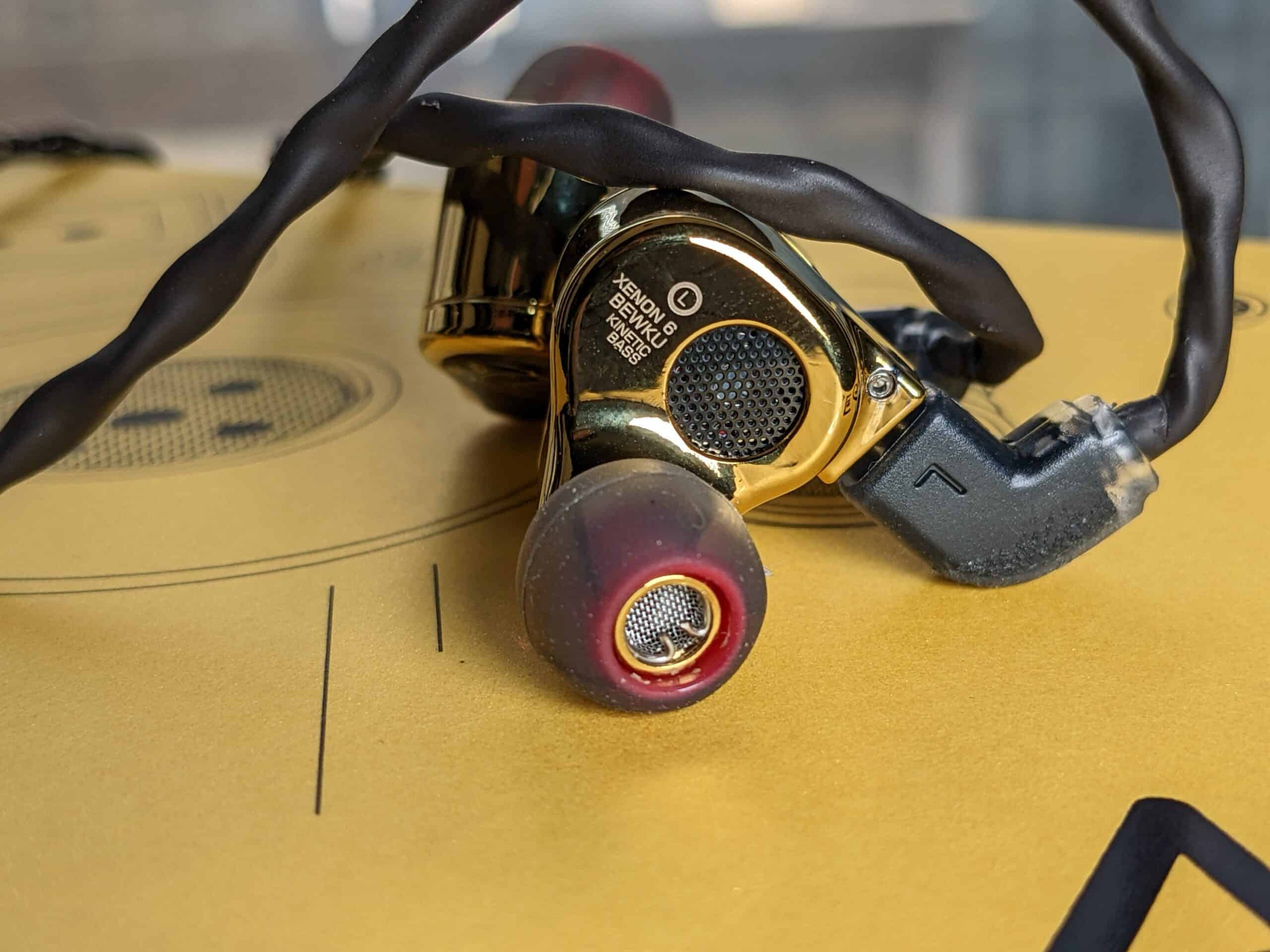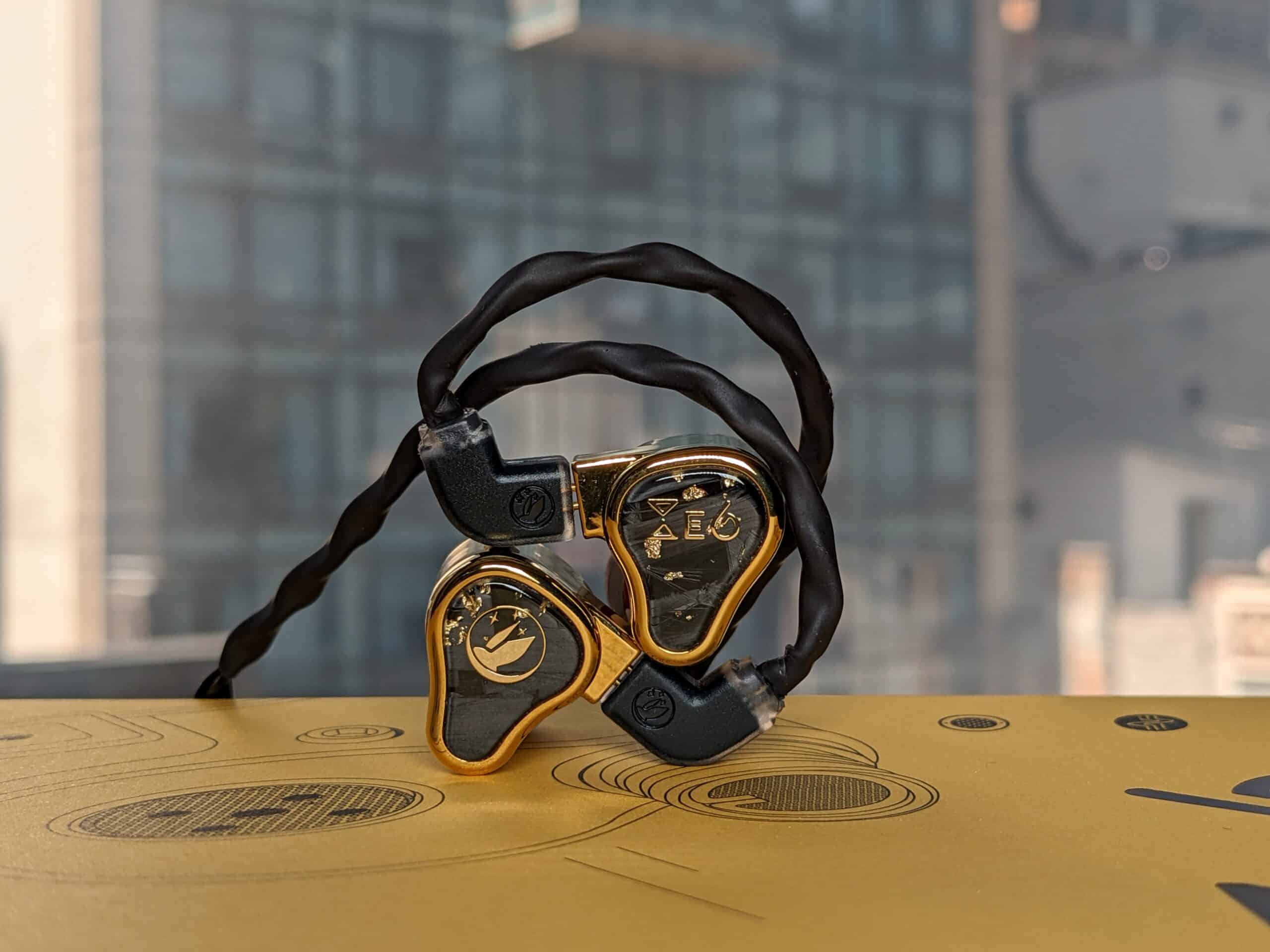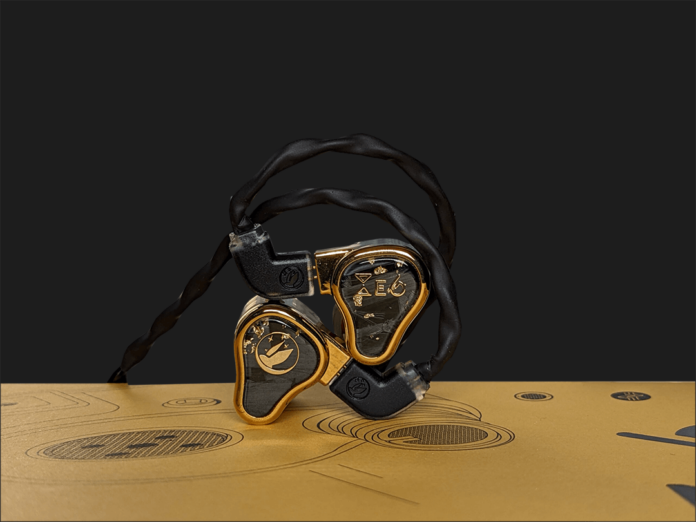FiR Audio Xenon 6 IEM Review
FiR Audio is a relatively new company with an interesting history. It was founded in 2018 by Bogdan Belonozhko, who hails from the family behind 64 Audio. Starting with a humble catalog that consisted of accessories like headphone vacuums and IEM cables, FiR seems to have come a long way since then. There’s no better testament to this than the in-ear monitor I’m reviewing today: the FiR Audio Xenon 6, which goes for an eyebrow-raising $3,899 with some unique and impressive technical design elements. I had a brief listen with the Xenon 6 at CanJam NYC earlier this year, and I’m excited to get the chance to sit down with it for a longer listen. Offered in both custom and universal fits, this review is (unsurprisingly) based on the latter. I’ll be going over the accessories, fit, technical design, and most importantly, what the FiR Audio Xenon 6 really sounds like – and if it can justify its extravagant price tag.
What’s In the Box?

- FiR Audio Xenon 6 UIEMs
- Braided Black 1.2m IEM cable with 4.4mm jack
- Hard Leather Case
- 3 Pairs Silicone Ear Tips
- 3 Pairs Foam Ear Tips
- ATOM XS Interchangeable Modules
- IEM Cleaning Tool
- ATOM Module Tool
- FiR Audio “Space Force” Patch
- Warranty Card
- User Guide
Fit and Physical Design
While FiR is certainly carving their own separate path from 64 Audio that will become apparent when we start getting into the sound portion of this review, comparisons to 64 are hard to resist when it comes to the physical design and included accessories of FiR IEMs.
We see the same comfortably rounded edges on the Xenon 6 that won’t be unfamiliar to those who have tried 64 Audio IEMs, and a continuation of similarities in the well insulated black braided cable with a firm “L” shape on the 2-pin side of its connection where it attaches to the IEMs. An additional 64 palimpsest can be found with the hard leather carrying case that features decorative white stitching and a unique felt seal. I’m perfectly content with these commonalities; the IEMs have a snug, non-fatiguing comfort, the carrying case is as lavish as it is protective, and the cable is premium beyond question. Topping it all off is a very well curated ear tip offering: a set of semi-firm silicone for balanced listens, and, to my personal delight, some deliciously premium foam tips that remind me of the marshmallow tips made by Campfire Audio.

One note I’ll make here is that I ended up using the foam ear tips for two reasons: 1) I liked them, and 2) I had a minor hiccup getting a completely secure seal in my right ear with the provided silicone tips. As this was a issue for only one of my ears, this is more than likely an ear-specific problem rather than an indicator of anything problematic in the FiR Xenon 6’s physical design.
So overall, an A+ when it comes to accessories and comfort.
As for the Xenon’s 6 style, have a look for yourself. I get a little bit of a Campfire Solaris Stellar Horizon vibe from the hieroglyphic-like font used on the sapphire-crystal faceplate. As for the housing, if you want some gold IEMs: here, have some gold IEMs. The shell is actually composed of stainless steel, but the Xenon 6’s gold color is clearly its defining aesthetic quality. This makes the IEM rather prone to smudging, but this isn’t really a complaint. Shiny surfaces smudge, like water is wet.
Technical Design
There are some interesting FiR-specific elements to go over here. If you’ve done some peripheral research into their IEMs before, you’ve likely read about or come across Kinetic Bass. When I saw Bogdan at the FiR table at CanJam earlier this year, he described the kinetic bass driver as being something akin to a bone conductor. However, this isn’t the type of bone conduction we see from Empire Ears Weapon X drivers that perform their bone conduction through shell vibrations. Rather, FiR outwardly positioned the dynamic driver featured in the Xenon 6, which blasts its lower frequencies out of the vent that you can see on the chamber-side of the IEMs. So while companies like Empire Ears are targeting the ossicles and ear canals in their bone conduction designs, FiR is targetting the cartilage and pinnae. This different approach to bone conduction is pretty intriguing and sounds promising on paper, as a common criticism of IEM’s is their inability to accurately emulate the head surface area that open-air bass frequencies usually cover. Kinetic bass should (in theory) improve low end imaging.

We also see a tubeless, open driver design as well as venting that offsets fatiguing air pressure build up in the ear canals. ATOM modules are included that can be swapped in and out to make adjustments to the Xenon 6‘s tuning. These design principles are…familiar once again, and perfectly welcome.
| Spec | FiR Audio Xenon 6 |
| Drivers | (1) 10mm Kinetic Bass DD
(2) OpenDriver BA’s for mid range (1) OpenDriver BA for high mids (1) OpenDriver BA w/ Sound Reflector for highs (1) OpenDriver EST for “ultra-highs” |
| Frequency Response | 20 Hz – 20 kHz |
| Impedance | 28 ohms |
Sound Stage
I realized pretty quickly that the FiR Xenon 6 is a very unique IEM that is following its own playbook, and this starts with the sound stage. I wasn’t hit with an enormous and expansive stage that stretched beyond my head, but rather, the opposite: the Xenon 6 might have one of the most vivid internally 3D stages that I’ve gotten to hear. Sounds with hard impact, particularly acoustic drums, had my head feeling like the shell of a floor tom. While the bone conduction drivers in Empire Ears designs generally target my jaw with sub bass frequencies, the Xenon 6’s conductive qualities spread themselves out along the sides of my head, and provide ample doses of mid and high bass vibrations along with its subs. Occasionally hard pans are able to break out of the heady, internal imaging and perch themselves on my shoulders or behind my ears before sliding back in with the rest of the image. A more insular stage might not be what you expect from an IEM at this price point, but it’s intriguingly unique and artful in it’s layering, and ultimately left me quite impressed.
Low End
The Xenon 6 comes with interchangeable modules that effect the tuning. I used the default set of modules to write this review.
The Xenon 6 is a strong contender for being the bassiest in-ear monitor you can find in this price range. I won’t mince words: if you don’t love bass, you should being looking for another pair of IEMs. The Xenon 6 has a V shape quality to its balance that I’ll address in the next section on mid range, but preceding its mid range trough is an unapologetic bass shelf boost. Subs, mid bass, and high bass are all brought far forward in the overall balance. Even my more bass light, treble heavy tests like the album “Heaven or Las Vegas” by Cocteau Twins had a warm and strong rumble attached to what are usually more subtle and supporting low end backings.
Usually when I realize I’m in possession of bass monster IEMs, I do what any normal person would do and look for the most aggressive electronic tracks to make my head explode. Interestingly enough, I found these kinds of tracks were a bit overwhelmed by the Xenon 6’s bold and broad low end, and could lose some of their articulation with overemphasized mid and high bass. I found the low end balance worked best with tracks that contained one or two strong low end elements rather than walls of bass energy.
The last thing I’ll add when it comes to the lower frequencies on the Xenon 6 is that it has a modest rumble, and a serious mid bass slam that consistently knocked square in the middle of my forehead.

Mids
While there is a V-shaped quality to the Xenon 6’s mids balance, this wasn’t something that immediately jumped out to me. Low and high mids pull off a pretty impressive balancing act that usually left me with the phantom sensation of hearing adequate center mids. Really, the only time I could hear any V-shaped casualties was on snare drums, and even then, this was only an occasional issue and only during busy parts of tracks. Vocals were colored pleasantly, finding articulate warmth and heft in their fundamentals that maintained clarity with an emphasis on their driving overtones in the upper mids.
While we see ramps on either end of the Xenon 6‘s center frequencies, low mids ultimately end up winning the tug-of-war in the mid range. Like I said, vocal fundamentals find prominence, as do the lower fundamentals on acoustic and electric guitars alike. Low mids are just barely separate from the Xenon 6’s immense low end, and at times blend with the high bass. While this is a characteristic that was likely partially responsible for me finding electronic music overwhelming on the IEM, I thought it offered a beautiful warmth on simpler tracks with just a couple of acoustic guitar parts (example: “Back Baby” by Jessica Pratt). And while I was just griping about how snare drums could sometimes get lost in a busy mix, they also stood out to me as one of my favorite parts to hear on the Xenon 6 as long as they had some room afforded to them. The low mids balance brought a fast and detailed thump out of their transients that was well complimented by the Xenon 6’s snappy higher frequencies.
Highs
For all the attention the Xenon 6’s low end demands, I was perhaps the most impressed with its higher frequencies for their presence and extension that managed to forgo peaky pain. 64 Audio tunings come to mind when it comes to the execution of its treble extension, which seems to return amplitude to frequencies bordering around 15 kHz before resuming its roll off. The bold exhibition of higher frequencies couples with the speed of the Xenon 6’s electrostatic driver to cleanly magnify transients on cymbals and airy rasps in vocals and wind instruments. Building off of my favorable impression of the thump that the Xenon imparted on snare drums in its low mids, rim harmonics on snare drums found extra pronunciation and lifelike clarity rather than an artificial sizzle. I’m a fan of this high end all on its own, but it contrasts particularly well with the wash of bass energy on the opposite end of the frequency spectrum.
Overall

FiR Audio’s Xenon 6 may be one of the most unconventional IEMs that I’ve tried in this price range. Frequently I find ultra premium IEMs are looking to deliver the most refined rendition of qualities that can be found in IEMs a fraction of their cost. I think FiR is delivering something genuinely different here, offering a risk-taking design and sound that you can’t quite get from any other manufacturer. If you’re thinking about getting your first ever high end IEM, it might be a reach to consider the Xenon 6 a first choice. However, if you’re familiar with side of the market already and have one or two premium pieces under your belt, there’s something very innovative and spunky to be had in its bassy and colorful balance and internal imaging that, I at least, haven’t heard from the likes of Empire Ears, Vision Ears, 64 Audio, and other high end IEM producers. For all of the respect I have for FiR creating something as innovative as the Xenon 6, what’s more important is that I thoroughly enjoyed listening with it as well.
You can purchase the FiR Audio Xenon 6 here from Audio46.
| Pros | Cons |
| -Fun and forceful bass
-Powerful mid bass slam -Pleasant warmth -Lots of high frequency detail that sounds natural -Vivid, internally 3D imaging -Comfortable fit -Good Accessories -Innovative design |
-Bass can be overwhelming on bass heavy tracks
-Snare drums are occasionally lost in busy mixes |
MAJORHIFI may receive commissions from retail offers.








